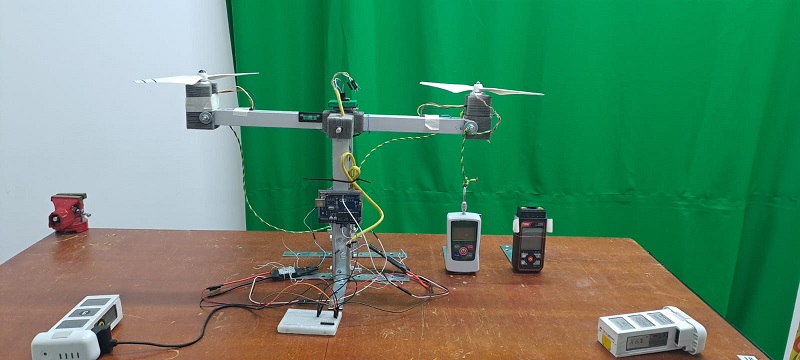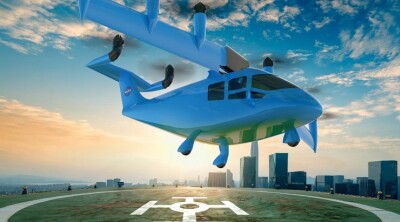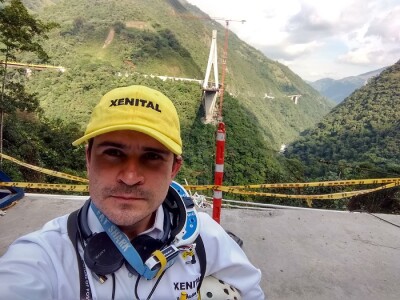Drones have been used in a variety of industries and innovative use-cases since their inception into our lives about ten years ago. The beginnings were marked by a frenzy to adapt existing workflows to these aerial marvels to improve efficiencies, decrease costs, increase human safety, and reduce time over traditional methods.
Normally we associate all these new protocols in an open sky with all the challenges that come from sharing the National Airspace (NAS) with crewed aviation. But there are a group of pioneers that are finding interesting applications in what is known as GPS-denied environments or to use a more common term, “indoor deployments.”
We have seen subterranean mining applications, containment tank’s inspections, and many others, but last week we spoke to a company in Colombia that blew our mind in terms of innovation and ingenuity.
We first reported on Xenital eight months ago when they caught our attention with their engineering applications. Now, a new conversation with its CEO Sebastian Uribe Sanabria revealed a disturbing macroeconomic reality in his country that has forced him and his team to change direction dramatically.
“Since we first spoke, a few weeks before Commercial UAV Expo in Las Vegas in September, we were excited about the opportunities with transportation infrastructure in Colombia,” Sebastian reflected. “But since then, the federal government has adopted certain austerity measures that directly affect our principal markets, and I had to make the difficult decision to change course accordingly and focus more on the private, industrial sector which was not affected by the budget cuts.”
Sebastian is not the first and will not be the last CEO to face the crude reality of the market in which their companies operate in. The real role of a good CEO, especially in a nascent industry and a startup environment, is the ability to see ahead and change course fast.
 “I was contacted by a large cocoa producer in the country that was having problems with a huge warehouse with thousands of pallets that needed to be accounted for fast and accurately and with an incredible turnround rate,” Sebastian said. “We saw an opportunity to switch from engineering to supply chain and inventory management and we jumped on it.”
“I was contacted by a large cocoa producer in the country that was having problems with a huge warehouse with thousands of pallets that needed to be accounted for fast and accurately and with an incredible turnround rate,” Sebastian said. “We saw an opportunity to switch from engineering to supply chain and inventory management and we jumped on it.”
Today, large industrial conglomerates and agricultural concerns have large warehouses where the merchandise is stored after the manufacturing process is completed and the product is packaged and then palleted for distribution. This transition period from raw material to packaged product creates the need for large storage facilities with a huge turnaround, as pallets of products come in from the field and a similar number leaves for the distribution chain to resellers and distributors.
“When the customer described to us how they did it with cranes and workers with bar-code readers, for hours and hours on end, we immediately thought of SLAM (simultaneous localization and mapping) and the fact that we could do it better with drones,” Sebastian said. “We immediately went into high gear and designed and constructed a drone that could fly the entire 33 kms (20 miles) of shelves in the warehouse in four hours, five pilots, and with just three batteries. Right now, it takes 30 people for 30 hours in dangerous conditions, and they are desperate to change to something faster and safer. Our version also allows the customer to receive the inventory information in real time and even though it is still in beta mode, we believe this is the future of warehouse management.”
Warehouses are well known for their metallic structures and that creates a GPS-denied flying environment. Drones that operate in these indoor structures, such as deep mines or reservoir tanks, need to have alternative sources of navigation in order to function properly and accurately.
“We’re using an IMU (inertial measurement unit) with nine degrees of freedom that allows our drone to navigate fast and accurately reading the pallet labels in just one flight,” Sebastian said. “Currently, we’re training an AI model to read and recognize the labels and populate a table with the product information. The more we fly, the more accurate the AI model becomes, and, right now, we’re obtaining 94%/95% accuracy in almost every label.”
 The idea would be to completely automate the inventory, so it could be programmed after-hours when there is no activity in the warehouse.
The idea would be to completely automate the inventory, so it could be programmed after-hours when there is no activity in the warehouse.
“Our plan is to have a completely autonomous system that could operate at night, after the warehouse is closed and there are no workers present,” Sebastian said. “The drone or drones will take off, fly the entire set of shelves, and then create the CSV (comma separated values) that would be available for management in real time, every night. The other huge advantage is that the drones will be constantly flying and creating a photographic and video record of the warehouse, and that can be used to monitor for unusual activity such as fire hazards.”
It was fascinating to hear about warehousing management and the use of SLAM to improve efficiencies and prevent accidents, but especially to hear it from a company that just a few months ago was photographing failed road bridges in remote locations. The need to be quick on your feet is a must if companies want to survive in the ever-changing world of uncrewed aviation.















Comments